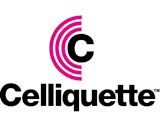Trends prediction a key part of future business?

A single class, easy-to-use airline called Esair; a de-stressing Headpack; a flatpack shop; a hand-held, smell-filled Aromodule; and fingerprint-sensitive premium cosmetics. If a clutch of new trend analysis reports are to be believed, these concepts and more paint a picture of the future for consumers.
The publications, from consultancies such as Winkreative, Lumsden Design Partnership and Dew Gibbons are designed to point the way forward across several sectors, including beauty, social trends, images and visual language and business markets.
The ‘future sector’ is becoming big business in the UK. Consultancies are increasingly setting up ‘prediction’ teams on the strength of the everyday work they already undertake in this area.
LDP has joined forces this month with trend forecaster .Bay to publish its inaugural futurology magazine, Futureissue. The bi-annual publication examines ‘all aspects of 21st century life’, says LDP managing director Callum Lumsden.
‘We’ve tried to visualise the trends identified in the report, to illustrate how they could manifest into real commercial opportunities. All the ideas we’ve explored are achievable, some in the short term and some in the distant future,’ Lumsden says.
LDP has translated into themes predictions from .Bay founder Rebekkah Bay. The results explored in the launch issue include a high street chain of cosmetic surgery outlets, called Be; Retailology, a flatpack shop designed to be erected anywhere in 20 minutes; and Celliquette, a term signalling that any electronic communication, from mobile phones to laptops, is banned in a particular area.
Trend analysis reports and futurology have long been by-products of consultancies’ daily work, as groups undertake research for clients on particular projects, believes Dew Gibbons creative director Shaun Dew. Dew has just published a ‘slightly tongue-in-cheek’ report, The Face of Tomorrow, on the future of the cosmetics industry, stretching as far ahead as 2078.
‘[Predicting future trends] is something designers do naturally,’ says Dew. ‘Admittedly, the most accurate work in this area is for the next ten years, but we decided to push it to its limits. After 20 years, predictions become a bit too hit and miss.’
By 2013, the report suggests, manufacturers will be targeting consumers with semi-bespoke products delivered to the workplace or home. By 2020, chilled cosmetics cabinets will be ubiquitous in all bathrooms. And by 2045 premium personalised products will only open in response to an individual’s fingerprints.
For Getty Images creative director Lewis Blackwell, ‘visual trend research’ is also a ‘by-product of [Getty’s] intelligence work’. It launched the third edition of its quarterly trend magazine, Taxi, last month, which aims to set out how changing trends affect the look of our age and stimulate ‘communicators’ working in creative industries.
‘Predicting a future visual language is the pictorial version of predicting the future of language and buzzwords,’ Blackwell explains. ‘[Taxi 3] is not just a catalogue under a different name. We want our clients to think about the power of visual language and international trends.’
Taxi 3 focuses on a particular social group, post-war Baby Boomers, and the fact that they have now reached ‘positions of power’, he says.
Similarly ‘issues’-driven is Winkreative’s second edition of Forecast, a trend report published at the end of September. Aimed at luxury brand owners, Forecast identifies business opportunities and gaps in the market in this area, and suggests how companies can make use of them creatively.
One emerging trend identified by chief executive and creative director Tyler Brûlé, for example, highlights ‘disaffected Americans’ and the brain drain to other countries.
-
Post a comment



